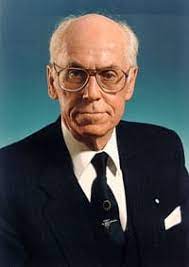In Estonia, the naming structure reflects the country's cultural heritage and linguistic traditions. Estonians typically have a given name (eesnimi) followed by a family name (perekonnanimi). Given names are often chosen for their meanings and are influenced by Estonian history, nature, and sometimes names popular in other European cultures. Estonian law requires that given names be compatible with the Estonian language and traditions. The family name, inherited and passed down through generations, often indicates an individual's familial or geographical origins. Many Estonian surnames are derived from nature, occupations, or characteristics, with common endings like "-son" (denoting "son of") or "-mäe" (meaning "hill"). In recent times, with increased global influence, there has been some diversification in naming practices, but the traditional Estonian naming conventions remain a significant aspect of national identity, linking individuals to their cultural and historical heritage.
Name Format / Sequence
Given Name(s) | Surname
Estonians have one to three given names followed by a surname (family name), which they typically inherit from their father.
Examples:
- Toomas Hendrik Ilves, fourth president of Estonia (male)
- Lennart Georg Meri, Estonian politician, writer, and film director (male)
- Kerli Kõiv, Estonian recording artist and songwriter (female)
- Jaak Jõerüüt, Estonian writer and politician (male)
- Kristina Šmigun-Vähi, Estonian cross-country skier (female)
- Arvo Pärt, Estonian composer (male)
- Paavo Järvi, Estonian conductor (male)
Given Name
Every Estonian has a given name, usually chosen by their parents. It is permissible to have up to three given names, but one or two is more common. Some Estonians have two names joined by a hyphen (e.g., Eerik-Niiles Kross). Given names are required by law to be gender-specific.
Many given names are Estonian in origin, such as the female name Luule (poetry) and the male name Koit (dawn). Estonian and Finnish are related languages, and many Estonians have names of Finnish origin. Russian names are very common (e.g., Vladimir and Tatjana), as are Estonian versions of foreign names (e.g., Toomas, the Estonian form of Thomas, and Maarja, Estonian for Maria).
Examples:
- Andres (male)
- Indrek (male)
- Jüri (male)
- Tõnis (male)
- Anna (female)
- Katariina (female)
- Sirje (female)
- Tiina (female)
Surname
Estonians have one surname (family name). They typically inherit it from their father, but it is permissible to give a child the mother’s surname instead. The most common surnames in Estonia are either of Estonian or Russian origin. Estonian surnames are often the words for occupations (e.g., Sepp means “smith”), topographic features (Mägi means “hill”), or plants or animals (Tamm means “oak,” and Rebane means “fox”). In the 1930s the government launched a nationalist campaign to “Estonianize” personal names, urging people with foreign names to change them to Estonian-language names, and thousands of people did so. For example, the actor Harald Rudolf Klein changed his German name to Ruut Tarmo. Today the Estonian government has a similar campaign to encourage citizens to change foreign surnames to Estonian-sounding ones.
Examples:
- Ivanov
- Tamm
- Saar
- Sepp
- Mägi
- Ilves
- Rebane
- Koppel
Married / Maiden Name
Married women in Estonia typically replace their surname with that of their husband, but many choose to keep their maiden name. Another popular option is to add the husband’s surname after the wife’s, joining the two with a hyphen. For example, when Kristina Šmigun married Kristjan-Thor Vähi, she changed her name to Kristina Šmigun-Vähi. It is also permissible (but still not common) for the husband to take the wife’s surname, or for both spouses to take a hyphenated double surname.
Diminutives / Nicknames
Diminutives are popular among friends and family in Estonia. They are typically formed by adding the suffixes -ke or -kene to a given name; Eevi would be called Eevike or Eevikene, and Peeter would be Peetrike or Peetrikene. Given names are also commonly shortened to nicknames (e.g., Peeter could be known as Peet).
Examples:
- Andres becomes Andi, Ando, Andro, Andu, Anti (male)
- Toomas becomes Tommi, Toom (male)
- Eliisabet becomes Eliise, Liis, Liisa, Liisi, Liisu (female)
- Katariina becomes Kaia, Kaisa, Kaja, Kati, Riina, Triinu (female)
Forms of Address / Honorifics / Titles
Estonians use given names among friends, family, and coworkers of the same age or rank. Upon first introduction, or in more formal settings, the honorifics Härra (Mr.), Proua (Mrs./Ms.), or Preili (Miss) are used, followed by the person’s surname. A professional title may also be used with a person’s surname. For instance, a professor named Tiina Sepp could be addressed either as Proua Sepp or Professor Sepp. She may also be addressed as Proua Professor (Ms. Professor). Other professional titles include Doktor (Doctor) and Direktor (Director). The term Preili, traditionally used for an unmarried woman, is falling out of favor, and many women prefer to be called Proua, regardless of their marital status.
Examples:
- Härra Sepp (Mr. Sepp)
- Doktor Sepp (Doctor Sepp)
- Proua Ilves (Mrs. Ilves)
- Direktor Ilves (Director Ilves)
Article written for World Trade Press by Anne Healey.
Copyright © 1993-2025 World Trade Press. All rights reserved.




